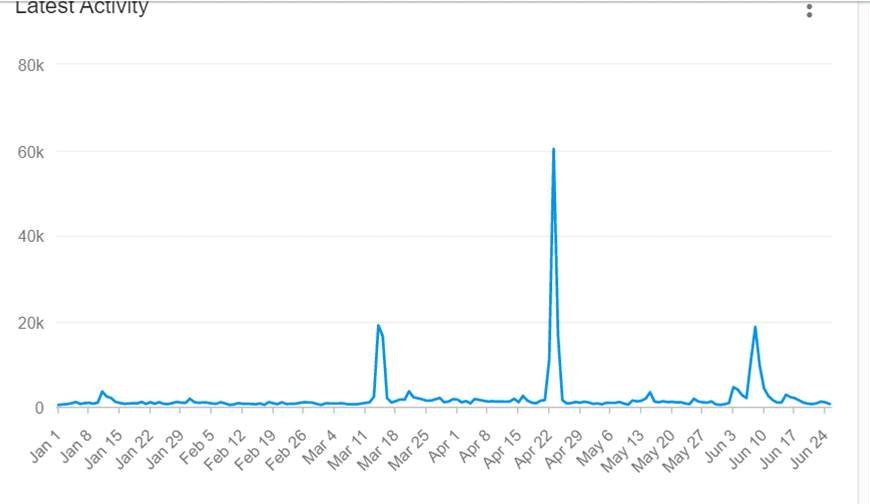Food and food-related safety have come to the fore in recent times. There are a whopping 362K online searches on “food safety” since January, with per-day mentions rising up to 60K, which is 70% higher than the previous year.1 Consumers are curious, confused, and worried about food handling and the supply chain.

Despite updates from the CDC and WHO on safety of food during the current pandemic, the topics of food, eateries, packaged food, food production, and delivery supply chain have come under much scrutiny. The reasons are obvious. Myths around spread of diseases through food are many and, in the case of a pandemic, being extra cautious is the obvious reaction by the individuals.
Much of this paranoia is also leading consumers and food business owners to invest more time to ensure food safety and hygiene measures are well in place. Contamination of the food supply can occur at various points of the supply chain, from the farm to the table. Each step of the way may introduce risk, and thus, should be assessed for proper preparation, storage, and handling.
Role of Technology in the New Normal
The current pandemic has caused governments to rethink strategies that involve not just domestic production of food, but also exports and imports. For example, Asia Pacific countries are focused on modernizing their food safety systems to ensure the availability of safe and nutritious food for the projected 5 billion inhabitants in 2050. These procedures vary based on the regulatory framework followed by a country or nation. The current pandemic, however, has made it important to have a global standard of food safety; something that needs to be followed by all nations alike. Technology can help nations reach this uniformity of standards.
Healthcare institutions and hospitals caring for children and the elderly who are at a much higher risk need to provide more vigilance and scrutiny in the services they deliver. Food hygiene in hospitals poses peculiar problems, particularly given the presence of patients who could be particularly vulnerable to microbiological and nutritional risks.
Multiple technologies already exist in this realm, and a few are bringing unprecedented levels of transparency and insight, paving the way for a safer food future:
- Blockchain
- Industrial internet of things (IoT)
- Next generation sequencing (NGS)
The use of blockchain technology gives organizations the ability to record and secure the validity of a wide variety of data. In the supply chain, this is already being realized as the blockchain is being used to amplify the traceability of products. For instance, Walmart has been working with IBM for more than a year on using blockchain to digitize a wide variety of products. Blockchain has been used to document the journey of everything from wine to salmon from source to table.
Another area of promise is the rise of the industrial application of IoT through the widespread adoption of sensor technologies that accurately and consistently capture and communicate data. Advances in networking, storage, and processing have created a mass market for sensors delivering real-time data from across the food supply chain. The net-new data gathered by innovative sensors will be leveraged to build safer food manufacturing plants that will operate more efficiently, monitor for unintended contamination, and protect against food fraud. Each of these potentialities would strengthen food safety programs and help brands identify problems more accurately and earlier.
NGS-based food tests and software analytics have the potential to significantly improve the scalability and accessibility of food safety and quality measures. NGS-based tests have very low limits of detection; the increased sensitivity of NGS produces more accurate results along with much higher levels of specificity and resolution in a single unified test. This results in more actionable information, at lower costs and more quickly than without NGS-based tests. The result of NGS adoption will be bulletproof food safety testing programs that provide an unprecedented insight into supply chains at a rate and scale that has never been experienced before.
Role of HCPs
Although there is no evidence of food, food containers, or food packaging being associated with the current pandemic, it is a virus that can survive on surfaces or objects. To address this concern, the latest guidelines released by WHO includes a recommendation for the food industry to reinforce personal hygiene measures and provide refresher training on food hygiene principles to eliminate or reduce the risk of food surfaces and food packaging materials becoming contaminated with the virus from food workers.
While technological advances, digitalization, novel foods, and processing methods provide a wealth of opportunities to simultaneously enhance food safety, nutrition, livelihoods, and trade, there are additional challenges on the horizon: myths surrounding food safety in times of a pandemic. One of the most effective means we have today to reduce food safety concerns is simply to educate the public, by providing information and helping alleviate their concerns.
HCPs can play a significant role in imparting awareness around the following aspects:
- Busting myths through sharing credible information and encouraging patients to use reliable information sources like the CDC and WHO
- Educating patients about basic hygiene measures and precautions to take in these times
- Reinforcing faith in the regulations and processes by way of mentions about technology implementations in this field
Food systems are becoming even more complex and interlinked, blurring the lines of regulatory responsibility. Solutions to these potential problems require intersectoral and concerted international action. Hence, greater international cooperation is needed to prevent unsafe food from causing ill health and hampering progress toward sustainable development. It also calls for a sustained investment and coordinated, multi-sectoral approaches for regulatory legislation, good manufacturing practices, accredited laboratory capacities, and adequate disease surveillance and food monitoring programs, all of which need to be supported by information technologies, shared information, training, and education.


 PWeekly
PWeekly